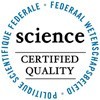

Research project TA/00/18 (Research action TA)
The research concerns the role of the auditor as an evaluator and thus incorporates the perspective of the policy evaluation and that of audit. This study comprises two concepts: the roles of an auditor and the control pyramid. The control pyramid consist of three levels. Internal audit supplements internal control and external audit builds upon internal audit. The concept of the role of an auditor is based on the idea that auditors can have different perceptions of how audits should be performed. Pollitt (1999) defines 4 possible roles for auditors which can be complementary as well as competitive:
1. as a judge, focussing on the compliance with legislation.
2. as a public accountant, checking whether public sector organisations report in a transparent manner.
3. as a researcher, creating new knowledge about the output and the results of public programmes.
4. as a management consultant, advising about the improvement of management practices.
Objectives
The central hypothesis states that public management reforms causes divergence. All four auditor roles evolve in different directions. These evolutions can cause problems with the execution of a single audit - a central characteristic of a modern control pyramid. The first subhypothesis postulates that the public management reform has led to tension between traditional and new auditor roles. The second subhypothesis states that the public management reform resulted in tensions within auditor roles. The third subhypothesis states that public management reform initiated an expansion of the existing auditor roles. This may mean that auditors reach the boundaries of their mandate. Theoretically, the causal relation between public management reform and developments in performance audit can go in two directions: the reform brings about new audit practices or the new audit practices bring about reform. Empirically, the causal relation goes mainly in one direction: the public management reforms induce a change in audit practices. (Pollitt, 2003: 162). This project aims to go beyond the mere description of audit reforms. It also seeks to explain the evolution of audit roles. The Public Management Institute has a tradition of both descriptive and explanatory international comparative studies on reforms within the policy, management and financial cycle. International experiences as well as a network of foreign public servants and academics serve as the foundation of this research.
Methodology
Typologies of performance auditing are defined in the theoretical section of the study. These are based on different approaches, institutional characteristics and methods and techniques of value-for-money auditing. A causal model is developed to explain the changes in auditor roles. An international comparative multiple case study is performed in the empirical section of this study. This case study is based on an analysis of performance audit reports and semi-structured face-to-face interviews, conducted on site. A gap analysis is constructed on the differences between the Belgian and international situation and evolutions.
Expected results and products
The findings of the analysis will be reported in a variety of media: research papers, articles in international journals, articles in national journals, a handbook on performance audit and through expert panels, workshops and an international seminar.